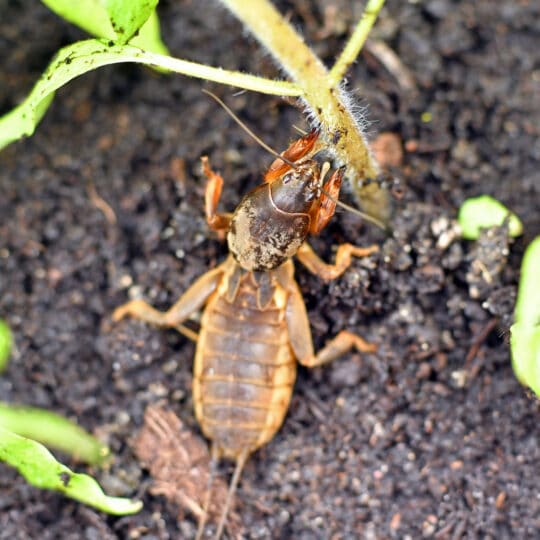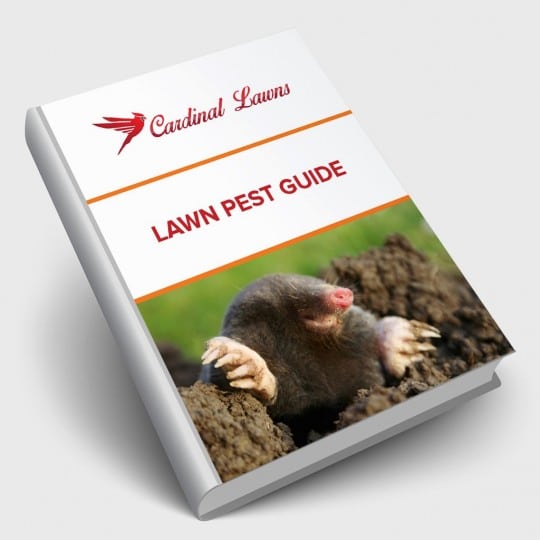Mole Cricket Control
Lawn Pest Identification & Treatment
Posted
August 6, 2020

There are a number of insects that could cause damage to your lawn and garden. Mole crickets are one such species. Learn the signs of these destructive creatures and how to help rid your lawn of them now and in the future.
Identifying Mole Crickets
While you may not notice the damage mole crickets can do until late summer, these pesky pests start causing trouble in early spring. After surviving the winter in the warm soil, they emerge, mate, and start laying their eggs. As new nymphs grow, they become more and more hungry. The start feeding on turf and tunneling just under the surface, killing other plants rooted there.
When you do catch sight of one, you’ll notice a golden brown body about an inch long that looks similar to a cricket, large front claws, and a lobster-like head. You may notice their handy work first: dead/dying grass or the mole-like tunnels along the grass and soil. To help determine mole cricket activity, flush them out of a suspected area with a soapy water solution.
Pest Control
If you’ve had issues with pests in the past, you can help get ahead of the problem by monitoring your lawn and applying treatment in the spring before much damage is done. Most mole crickets and their newly hatched nymphs will still be close to the surface at this time. Target areas where adults are seen or have done damage in the past. Spray soil, grasses, and other vegetation thoroughly or apply pesticide granules to moist soil. To help attract crickets closer to the surface, irrigate your lawn before applying the treatment. Then water the treated area after application to release the active ingredients. Always follow the proper procedure of the treatment product being used, especially when used around edible plants, people, and pets.

Download Your FREE Lawn Pest Guide
Pests become most prevalent during the heat and humidity of summer. Take some time to learn about the signs of infestations before any damage can be caused to your landscape. This handy guide will teach you how to spot common lawn pests and how to keep them from causing harm to you and your property.